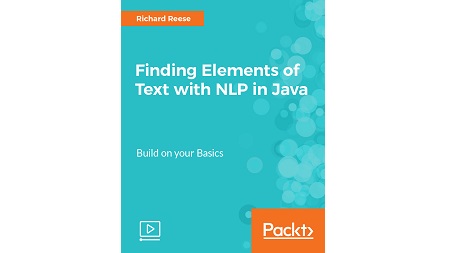
English | MP4 | AVC 1920×1080 | AAC 48KHz 2ch | 2h 36m | 1.26 GB
Hone your skills of using Natural Language Processing techniques with Java
Natural Language Processing (NLP) is used in many applications to provide capabilities that were previously not possible. It involves analyzing text to obtain intent and meaning, which can then be used to support an application.
Using NLP within an application requires a combination of standard Java techniques and often specialized libraries frequently based on models that have been trained. Developers need to know what is available, how these technologies can be used, and when they should be used.
This video course will start by building on the basic NLP tasks of data normalization, tokenization, and SBD to perform more specialized NLP tasks. You will be able to do more than simply find a word in the text. Also, identify specific elements such as a person’s name or a location from the text.
Learn to split a sentence into basic grammatical units is another task that enables you to extract meaning and relationships from text. Towards the end of this course, you will also be able to classify text and determine the intent of the text.
What You Will Learn
- Identify names, dates, and locations
- Identify the grammatical parts of a sentence
- Classify documents by type
- Determine the sentiment of text
- Extract the relationship between elements of text
Table of Contents
01 The Course Overview
02 The Nature and Problems Associated with NER
03 Using Regular Expression for NER
04 Using NLP API’s for NER
05 Training a Model for NER
06 Understanding POS
07 Using NLP API’s for POS Processing
08 Training a POS Model
09 Text Classification and Sentiment Analysis
10 Classifying Text Using NLP Models
11 Performing Sentiment Analysis
12 Understanding Relationship Types and Parse Trees
13 Extracting Relationships Using NLP API’s
14 Finding Word Dependencies and Coreference Resolution Entities
Resolve the captcha to access the links!